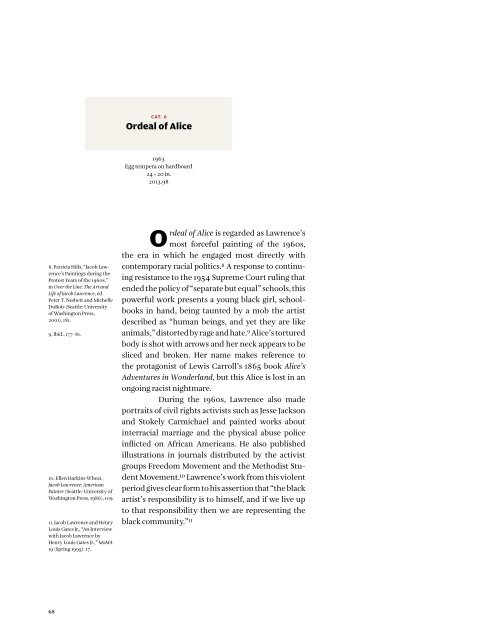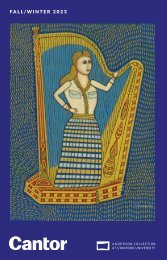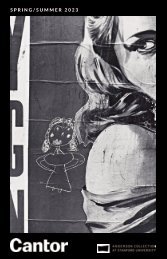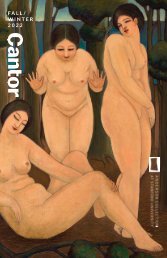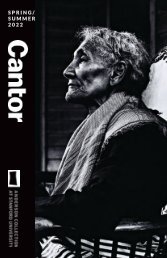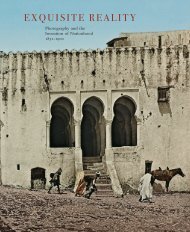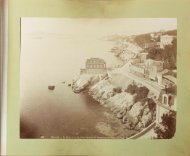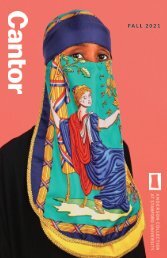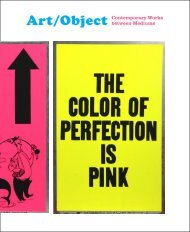Exhibition Catalog | Jacob Lawrence
Explore a gift of drawings, prints, and paintings by African American modernist Jacob Lawrence addressing Black history and civil rights, public life, faith, and creativity.
Explore a gift of drawings, prints, and paintings by African American modernist Jacob Lawrence addressing Black history and civil rights, public life, faith, and creativity.
Create successful ePaper yourself
Turn your PDF publications into a flip-book with our unique Google optimized e-Paper software.
CAT. 6<br />
Ordeal of Alice<br />
1963<br />
Egg tempera on hardboard<br />
24 × 20 in.<br />
2013.98<br />
8. Patricia Hills, “<strong>Jacob</strong> <strong>Lawrence</strong>’s<br />
Paintings during the<br />
Protest Years of the 1960s,”<br />
in Over the Line: The Art and<br />
Life of <strong>Jacob</strong> <strong>Lawrence</strong>, ed.<br />
Peter T. Nesbett and Michelle<br />
DuBois (Seattle: University<br />
of Washington Press,<br />
2001), 181.<br />
9. Ibid., 177–81.<br />
10. Ellen Harkins Wheat,<br />
<strong>Jacob</strong> <strong>Lawrence</strong>: American<br />
Painter (Seattle: University of<br />
Washington Press, 1986), 109.<br />
11. <strong>Jacob</strong> <strong>Lawrence</strong> and Henry<br />
Louis Gates Jr., “An Interview<br />
with <strong>Jacob</strong> <strong>Lawrence</strong> by<br />
Henry Louis Gates Jr.,” MoMA<br />
19 (Spring 1995): 17.<br />
Ordeal of Alice is regarded as <strong>Lawrence</strong>’s<br />
most forceful painting of the 1960s,<br />
the era in which he engaged most directly with<br />
contemporary racial politics.⁸ A response to continuing<br />
resistance to the 1954 Supreme Court ruling that<br />
ended the policy of “separate but equal” schools, this<br />
powerful work presents a young black girl, schoolbooks<br />
in hand, being taunted by a mob the artist<br />
described as “human beings, and yet they are like<br />
animals,” distorted by rage and hate.⁹ Alice’s tortured<br />
body is shot with arrows and her neck appears to be<br />
sliced and broken. Her name makes reference to<br />
the protagonist of Lewis Carroll’s 1865 book Alice’s<br />
Adventures in Wonderland, but this Alice is lost in an<br />
ongoing racist nightmare.<br />
During the 1960s, <strong>Lawrence</strong> also made<br />
portraits of civil rights activists such as Jesse Jackson<br />
and Stokely Carmichael and painted works about<br />
interracial marriage and the physical abuse police<br />
inflicted on African Americans. He also published<br />
illustrations in journals distributed by the activist<br />
groups Freedom Movement and the Methodist Student<br />
Movement.¹⁰ <strong>Lawrence</strong>’s work from this violent<br />
period gives clear form to his assertion that “the black<br />
artist’s responsibility is to himself, and if we live up<br />
to that responsibility then we are representing the<br />
black community.”¹¹<br />
68


